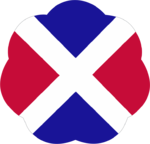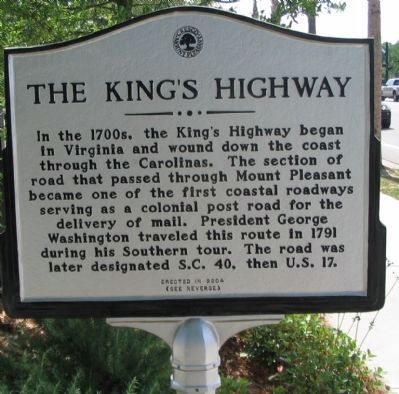Gamecock Fanatics
You are using an out of date browser. It may not display this or other websites correctly.
You should upgrade or use an alternative browser.
You should upgrade or use an alternative browser.
Countdown to Kickoff II: The Final 24 Days
- Thread starter Swayin
- Start date
USS Bunker Hill, CV-17.
_at_sea_in_1945_(NH_42373).jpg/1280px-USS_Bunker_Hill_(CV-17)_at_sea_in_1945_(NH_42373).jpg)
Didn't know Paul Newman was an enlisted aircrewman in an Avenger.
Sa-lute!
_at_sea_in_1945_(NH_42373).jpg/1280px-USS_Bunker_Hill_(CV-17)_at_sea_in_1945_(NH_42373).jpg)
https://en.wikipedia.org/wiki/USS_Bunker_Hill_(CV-17)USS Bunker Hill (CV/CVA/CVS-17, AVT-9) was one of 24 Essex-class aircraft carriers built during World War II for the United States Navy. The ship was named for the Battle of Bunker Hill in the American Revolutionary War. Commissioned in May 1943 and sent to the Pacific Theater of Operations, the ship participated in battles in the Southwest Pacific, Central Pacific and the drive toward Japan through Iwo Jima, Okinawa, and air raids on the Japanese homeland.
While covering the invasion of Okinawa, Bunker Hill was struck by two kamikazes in quick succession, setting the vessel on fire. Casualties exceeded 600, including 352 confirmed dead and an additional 41 missing, with 264 wounded. These were the second heaviest personnel losses suffered by any carrier to survive the war after Franklin. After the attack, Bunker Hill returned to the U.S. mainland and was still under repair when hostilities ended.
After the war, Bunker Hill was employed as a troop transport bringing American service members back from the Pacific, and was decommissioned in 1947. While in reserve the vessel was reclassified as an attack carrier (CVA), then an antisubmarine carrier (CVS) and finally an Auxiliary Aircraft Landing Training Ship (AVT), but was never modernized and never saw active service again. Bunker Hill and Franklin were the only Essex-class ships never recommissioned after World War II.
Stricken from the Naval Vessel Register in 1966, Bunker Hill served as an electronics test platform for many years in San Diego Bay, and was sold for scrap in 1973. An effort to save her as a museum ship in 1972 was unsuccessful.
Some relics survive. Six hundred tons of steel armor plate, manufactured before the atomic age, are used by Fermilab to shield experiments from interference by ambient or background subatomic particles. Dome-shaped protective shrouds from the carrier's mothballing were incorporated in a residence in West Linn, Oregon. The ship's bell was purchased from the scrapper, displayed for a while at the San Diego Air and Space Museum, and in 1986 was provided to the guided missile cruiser which bears the name USS Bunker Hill.
Notable sailors
- Henry McIlhenny, eventual curator and chairman of the Philadelphia Museum of Art, served aboard the ship for almost a year and a half at the end of World War II.
- Bruce Meyers served aboard Bunker Hill during World War II. He survived the May 1945 Kamikaze attack, and would go on to create the original fiberglass dune buggy, the Meyers Manx. Meyers is pictured in his creation below.

- Paul Newman, as a radioman-gunner in a Grumman TBF Avenger torpedo bomber, would have served with his squadron VT-84 aboard Bunker Hill in 1945, but missed the Battle of Okinawa, as his pilot had developed an ear infection and the plane crew was grounded and did not join CAG-84 aboard the ship.
- Card Walker served as Flight Control 1943–45. He returned to work at the Walt Disney Studios after the war, eventually becoming CEO, president, and finally chairman of the Walt Disney Company. Walker retired from the Disney board of directors in 2000, having served 50 years on the board. Of the original crew, he was the only flight deck officer who survived the war.
https://en.wikipedia.org/wiki/Paul_NewmanNewman served in the United States Navy in World War II in the Pacific theater. Initially, he enrolled in the Navy V-12 pilot training program at Yale University, but was dropped when his colorblindness was discovered. Boot camp followed, with training as a radioman and rear gunner.
Qualifying in torpedo bombers in 1944, Aviation Radioman Third Class Newman was sent to Barbers Point, Hawaii. He was subsequently assigned to Pacific-based replacement torpedo squadrons VT-98, VT-99, and VT-100, responsible primarily for training replacement combat pilots and aircrewmen, with special emphasis on carrier landings. He later flew as a turret gunner in an Avenger torpedo bomber.
As a radioman-gunner, his unit was assigned to the aircraft carrier Bunker Hill along with other replacements shortly before the Battle of Okinawa in the spring of 1945. The pilot of his aircraft had an earache and was grounded as was his crew, including Newman. The rest of their squadron flew to the Bunker Hill. Days later, a kamikaze attack on the vessel killed a number of service members, including other members of his unit.
Didn't know Paul Newman was an enlisted aircrewman in an Avenger.
Sa-lute!
Last edited by a moderator:
USS Bunker Hill (CV-17) severely damaged after receiving two Kamikaze hits in 30 seconds off of Okinawa on May 11, 1945. (below)

The photo appears to have served as the creative influence for the album cover art work for the soundtrack of the old Victory at Sea television series that was originally broadcast by NBC from 1952-53.
The opening scene from the TV series.

https://en.wikipedia.org/wiki/Victory_at_Sea
Tom Brokaw had the opening theme of NBC Nightly News changed during his tenure as anchor and producer to reflect the music from the old Victory at Sea series. This was no doubt inspired by his writing of The Greatest Generation.

The photo appears to have served as the creative influence for the album cover art work for the soundtrack of the old Victory at Sea television series that was originally broadcast by NBC from 1952-53.
The opening scene from the TV series.

https://en.wikipedia.org/wiki/Victory_at_Sea
Tom Brokaw had the opening theme of NBC Nightly News changed during his tenure as anchor and producer to reflect the music from the old Victory at Sea series. This was no doubt inspired by his writing of The Greatest Generation.
Last edited by a moderator:
The Northrop A-17 Nomad.


https://en.wikipedia.org/wiki/Northrop_A-17

The Northrop A-17, a development of the Northrop Gamma 2F model, was a two-seat, single-engine, monoplane, attack bomber built in 1935 by the Northrop Corporation for the U.S. Army Air Corps. When in British Commonwealth service during World War II, the A-17 was called Nomad.
Development and design
The Northrop Gamma 2F was an attack bomber derivative of the Northrop Gamma transport aircraft, developed in parallel with the Northrop Gamma 2C, (of which one was built), designated the YA-13 and XA-16. The Gamma 2F had a revised tail, cockpit canopy and wing flaps compared with the Gamma 2C, and was fitted with new semi-retractable landing gear. It was delivered to the United States Army Air Corps for tests on 6 October 1934, and after modifications which included fitting with a conventional fixed landing gear, was accepted by the Air Corps. A total of 110 aircraft were ordered as the A-17 in 1935.
The resulting A-17 was equipped with perforated flaps, and had fixed landing gear with partial fairings. It was fitted with an internal fuselage bomb bay that carried fragmentation bombs and well as external bomb racks.
Northrop developed new landing gear, this time completely retractable, producing the A-17A variant. This version was again purchased by the Army Air Corps, who placed orders for 129 aircraft. By the time these were delivered, the Northrop Corporation had been taken over by Douglas Aircraft Company, export models being known as the Douglas Model 8.

https://en.wikipedia.org/wiki/Northrop_A-17
Last edited by a moderator:
Super famous photo - and I have the whole VaS series on VHS, with no way to watch it anymore, lol - will get it transferred one of these days.1 hour ago, kingofnerf said:
USS Bunker Hill (CV-17) severely damaged after receiving two Kamikaze hits in 30 seconds off of Okinawa on May 11, 1945. (below)
The photo appears to have served as the creative influence for the album cover art work for the soundtrack of the old Victory at Sea television series that was originally broadcast by NBC from 1952-53.
I have a DVD copy from these folks that I picked up in a grocery store of all places some years ago.Super famous photo - and I have the whole VaS series on VHS, with no way to watch it anymore, lol - will get it transferred one of these days.
https://www.shoutfactory.com/product/victory-at-sea?product_id=3966
Lots of other good titles as well by these folks if you browse through the titles.
Last edited by a moderator:
USS Crosby. APD-17. Formerly DD-164.
_off_the_Mare_Island_Naval_Shipyard,_California_(USA),_on_24_February_1943_(19-N-41557).jpg)
A well-traveled tin can.
_off_the_Mare_Island_Naval_Shipyard,_California_(USA),_on_24_February_1943_(19-N-41557).jpg)
https://en.wikipedia.org/wiki/USS_Crosby_(DD-164)Clearing San Francisco on 27 February 1943, Crosby sailed by way of Pearl Harbor, Samoa, Viti Levu, and Noumea to Espiritu Santo, arriving on 27 March for training exercises with the 4th Marines. Beginning the active service which was to bring her a Navy Unit Commendation, Crosby sailed on 29 April for Guadalcanal as a transport screen.
Crosby put out from Humboldt Bay on 12 October 1944 and put men of the 6th Rangers ashore on Suluan Island, Leyte on 17 October, for a reconnaissance mission. In preparation for the invasion landings, she landed troops on Dinagat Island, at the opening of Leyte Gulf on 19 and 20 October. Reloading troops at Humboldt Bay, she landed them in Ormoc Bay on 7 December.
She recovered the survivors of Ward which was sunk by American gunfire after severe damage from Japanese kamikazes. Crosby participated in the landings on Mindoro 15 December and again returned to Humboldt Bay for additional men. After landing her troops at Lingayen Gulf on 11 January 1945, Crosby continued to support the Luzon landings, landing men successfully at Nasugbu on 31 January; Mariveles on 15 February; and Corregidor on 17 February. On 25 February she cleared for Ulithi and an overhaul.
Awards
In addition to her Navy Unit Commendation, Crosby earned 10 battle stars for World War II service.
A well-traveled tin can.
Only 10 battle stars? Work harder, Crosby ...USS Crosby. APD-17. Formerly DD-164.
https://en.wikipedia.org/wiki/USS_Crosby_(DD-164)
A well-traveled tin can.
How do y'all like my NASCAR team?


Nieuport 17

Spoiler
The Nieuport 17 C.1 (or Nieuport XVII C.1 in contemporary sources) was a French biplane fighter designed and manufactured by the Nieuport company during World War I. An improvement over the Nieuport 11, it was a little larger than earlier Nieuports and better adapted to the more powerful engine than the interim Nieuport 16. Aside from early examples, it had the new Alkan-Hamy synchronization gear, permitting the use of a fuselage-mounted synchronized Vickers gun firing through the propeller disc.
https://en.wikipedia.org/wiki/Nieuport_17

Spoiler
The Nieuport 17 C.1 (or Nieuport XVII C.1 in contemporary sources) was a French biplane fighter designed and manufactured by the Nieuport company during World War I. An improvement over the Nieuport 11, it was a little larger than earlier Nieuports and better adapted to the more powerful engine than the interim Nieuport 16. Aside from early examples, it had the new Alkan-Hamy synchronization gear, permitting the use of a fuselage-mounted synchronized Vickers gun firing through the propeller disc.
https://en.wikipedia.org/wiki/Nieuport_17
Greg Biffle


Joe Montana



.jpg/1920px-B17_-_Chino_Airshow_2014_(framed).jpg)


_underway_at_sea_in_1967.jpg)

